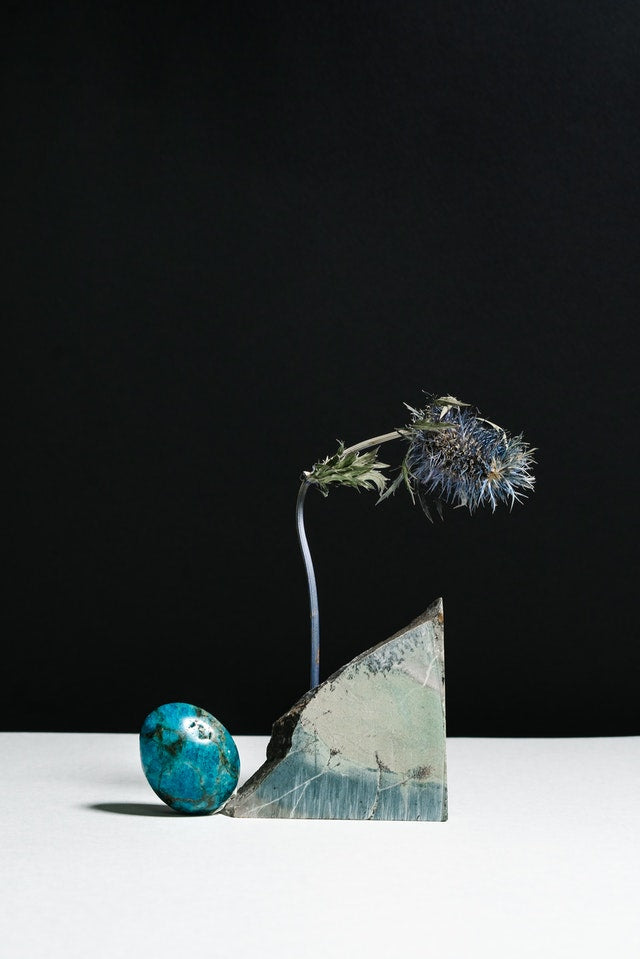Allow us first to consider what mineral species are destined to give us green stones. Excluding the
semi-valuable dark or clear stones we have:
1. Grass-green beryl (the emerald) which is, obviously, first in esteem among the green stones
also, first in the fine nature of its tone.
2. Tourmaline (a few examples of which maybe more almost approach the emerald than
some other green stones).
3. The demantoid garnet (some of the time called "olivine" in the exchange).
4. Genuine olivine (the peridot and the chrysolite of the trade).[76]
5. Pale blue green beryl (sea blue).
6. Green sapphire (Oriental emerald or Oriental greenish blue).
7. Chrysoberyl (alexandrite and furthermore the greenish-yellow chrysoberyl).
1. Thinking about first the emerald, we have as authentic a utilization of shading in distinctive a stone as
could be chosen, for emerald of fine grass-green tone isn't risen to by some other valuable
stone in the rich smooth character of its tone. We need to be careful here, notwithstanding, of the fine
glass impersonations, which, while coming up short on the assortment of genuine emerald, as a result of absence of dichroism,
are by the by of a shading so almost like that of the emerald that nobody should endeavor to choose
by shading alone with regards to whether a stone is veritable or impersonation emerald. In the event that a hardness test shows that
the material is a certifiable hard stone and not a glue, at that point one who is very much familiar with the
shade of fine emerald can say on the double whether a stone is a fine emerald or some other hard green
stone. Where[77] the shading is less fine, notwithstanding, one may well won't choose by the shading,
in any event, when sure that the material isn't glass, for some fine tourmalines approach a portion of the
more unfortunate emeralds in wealth of shading.
The "Logical Emerald" Fraud. No "logical" emeralds of attractive size have at any point been
delivered similarly as can be learned. Numerous endeavors to replicate emerald by softening beryl or
emerald of sub-par tone have come about just in the creation of a beryl glass, which, while its
shading may be of attractive shade, was gentler and lighter in weight than genuine emerald. It was moreover
a genuine glass and subsequently independently refracting and without dichroism, while emerald is translucent
(not polished or nebulous), is doubly refracting, and shows dichroism.
Try not to be deluded, at that point, into purchasing or selling an impersonation of emerald under the terms
"engineered," "logical," or "reproduced," as such terms, when so utilized, are[78] used to misdirect
one into feeling that the item offered bears the very connection to the genuine emerald that
logical rubies and sapphires bear to the common stones. Such isn't the situation.
About the most perilous impersonation of the emerald that is at any point found in the exchange is the trio that
has a top and a back made of genuine yet pale beryl (a similar mineral as emerald, yet not of the
right tone) and a slender cut of profound emerald green glass laid between. This cut of glass is
generally positioned behind the support so a record won't discover any mark of assault. The particular
gravity of the trio is for all intents and purposes that of emerald, its tone is regularly awesome, and it is doubly
refracting. It is subsequently a hazardous impersonation. (See Fig. 8.)
Emerald Triplets. A cautious assessment of one of these trios, in the disconnected condition, with a
great focal point, will uncover the meager line of intersection of the beryl with the glass. (The surface glosses of
the two materials are enough[79] distinctive for the prepared eye to recognize the edge without a moment's delay.) Such
a trio, whenever held in the sun, will reflect onto a card two pictures in pale or white light, one coming
from the top surface of the table and the other from the top surface of the glass cut inside. In
different words, it acts in this regard like a doublet. A genuine emerald would give only one such
reflection, which would come from the top surface of the table.
FIG. 8.— EMERALD TRIPLET.
2. Tourmalines, when green, are normally more obscure than emeralds and of a more articulated yellow
green, or they might be of excessively somewhat blue a green, just like the case with the absolute best of the green
tourmalines from[80] Maine. Connecticut green tourmaline tends more to the dull yellowish
green, and Ceylon tourmaline to the olive green. The more grounded dichroism of the tourmaline
habitually uncovers itself to the unaided eye, and there is generally one bearing or position in which
the shade of the stone is sub-par compared to its tone the other way or position. Most
tourmalines (aside from the lightest shades) should be cut so the table of the completed stone
lies on the precious stone, as, when cut with the table lying across the gem (opposite
to the foremost optical pivot) the stones are excessively dim to be pretty. Thus when one turns the
cut stone with the goal that he is glancing in the area which was initially here and there the gem (the
bearing of single refraction and of no dichroism) he gets a brief look at a less stunning shading than is
outfitted by the stone in different positions. With a genuine emerald no such uniqueness in the shading
would show up. There may be a slight difference in conceal (as[81] seen by the unaided eye), however no
hint of a terrible shade would show up.
By contemplating numerous tourmalines and a couple of emeralds one may secure an eye for the distinctions of
shading that describe the two stones, however it is as yet important to be careful with the fine glass impersonation
what's more, to utilize the document and furthermore to look with a powerful glass for any adjusting bubbles. The
emerald won't ever have the last mentioned. The glass impersonation often has them. The sharp
rough defects and breaks that so frequently show up in emerald are probably going to show up likewise in tourmaline as
both are weak materials. The glass impersonations oftentimes have such imperfections placed into them either by
squeezing or by striking the material. Every now and again, as well, wisps of small air bubbles are left in the glass
impersonations in such design that except if one examines them cautiously with a decent focal point they
unequivocally take after the blemishes in common emerald.
I have hence expounded regarding how one may recognize genuine emerald from tourmaline[82] and
from glass impersonations in light of the fact that, because of the great worth of fine emerald and its inconsistent
event, there is maybe more requirement for the capacity to segregate among it and its
impersonations and substitutes than there is in practically some other case. Where esteems are high the
compulsion to devise and to sell impersonations or substitutes is incredible and the requirement for expertise in
recognizing the genuine and the bogus is relatively incredible.
3. The demantoid garnet (frequently sadly and inaccurately called "olivine" in the exchange) is
normally of an olive or pistachio conceal. It might, be that as it may, approach a pale emerald. The refraction
being single in this, as in all garnets, there is little assortment to the shading. The scattering being very
high, nonetheless, there is a solid inclination, despite the profundity of the body tone, for this stone to
show "fire," that is, rainbow shading impacts. The gloss, as well, is precious stone like as the name
"demantoid" connotes. With this record of the[83] stone and a couple of opportunities to see the genuine
demantoid garnet adjacent to an emerald nobody would probably confuse one with the other. The
demantoid garnet is additionally delicate as contrasted and emerald (61⁄2 as against almost 8).
4. Genuine olivine (the peridot or the chrysolite of the exchange) is of a fine leaf-green or container green
conceal in the peridot. The chrysolite of the gem dealer is normally of a yellower green. Much of the time an
olive-green shade is seen. The shine of olivine (if of the peridot conceal) is sleek, and
this may serve to recognize it from tourmaline (which it might take after in shading). Its twofold
refraction is extremely enormous likewise, with the goal that the multiplying of the edges of the back features may effectively be
seen through the table with a focal point. The dichroism is weak as well, while that of tourmaline is
solid. Nobody would probably mistake the stone for genuine emerald subsequent to examining what has
preceded.[84]
5. Somewhat blue green beryl (sea blue) is generally of a pale straightforward green or blue green (right around a
unadulterated light blue is additionally found).
Having every one of the properties of its more significant assortment, emerald, the pale beryl may, by the utilization of
these properties, be recognized from the light blue-green topaz which so emphatically takes after it
in shading.
6. Green sapphire only occasionally even methodologies emerald in fineness of shading. At the point when it distantly
recommends emerald it is classified "Oriental" emerald to signify that it is a corundum diamond. Generally green
sapphires are of excessively blue a green to take after emerald. Some are truly "Oriental" sea blues.
Now and again the green of the green sapphire is because of the presence, inside the cut stone, of both
blue and yellow bits, the light from which, being mixed by its appearance inside the stone,
arises as green as seen by the independent eye, which can't dissect colors. The dim sapphires of
Australia are as often as possible green when cut one way and[85] dark blue when cut in the
inverse heading. The green, nonetheless, is rarely satisfying.
7. Chrysoberyl as ordinarily seen is of a yellowish green. The fine pearl chrysoberyls known as
alexandrites, be that as it may, have a satisfying pale blue green or profound olive green tone by sunlight and
change in a most amazing style by fake light under which they show raspberry red colors.
This change, as indicated by G. F. Herbert-Smith, is expected basically to the way that the equilibrium in
the range of light communicated by the stone is fragile to such an extent that when a light, wealthy in short wave
lengths, falls upon it the blue green impact is clear, though when the light is wealthy in long wave
lengths (red finish of the range), the entire stone seems red. The solid dichroism of the
species additionally helps this difference. The chrysoberyls of the cat's-eye kind (of stringy or rounded
inner construction) are typically of olive green or tanish green shades.

